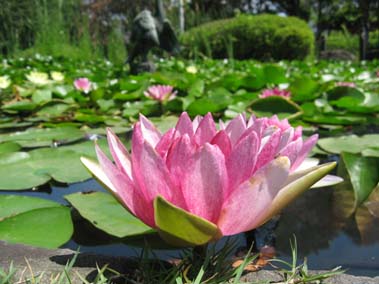 Bonsai is one of many things, I am very curious about in Japan. You may be able to look at a potted Bonsai tree for many hours without being fed up. It is so gorgeous. However, it is not an easy task to make and maintain a bonsai tree. It needs a lot of commitment and patience.
Bonsai is one of many things, I am very curious about in Japan. You may be able to look at a potted Bonsai tree for many hours without being fed up. It is so gorgeous. However, it is not an easy task to make and maintain a bonsai tree. It needs a lot of commitment and patience.Bonsai is the art of aesthetic miniaturization of trees by growing them in containers. Originating in China, Bonsai is a Japanese pronunciation of the Chinese word Penzai. The word Bonsai has been used by the west as an umbrella, term for all miniature trees. Bonsai are not genetically dwarfed plants. They are created from nearly any tree or shrub species and remain small through pot confinement and crown and root pruning. Some specific species are more sought after for use as Bonsai material. This is because they have characteristics that make them appropriate for the smaller design arrangements of Bonsai.
There are many different styles of Bonsai exist. The most common styles include; formal upright, slant, informal upright, cascade, semi-cascade, raft, literati and group/forest. In addition, there are root over rock style, broom style, multi trunk style and growing in a rock style. Traditionally, Bonsai are shaped from temperate climate trees kept outdoors as they require full sunlight and a winter dormancy period at near freezing temperatures. In the artificial environments of a home, these trees will become weakened and die.
Recently, I visited a Bonsai museum near Tokyo. There were hundreds of Bonsai trees of different types, styles and ages. The oldest one was considered more than 1000 years old. Isn’t it amazing?
Recently, I visited a Bonsai museum near Tokyo. There were hundreds of Bonsai trees of different types, styles and ages. The oldest one was considered more than 1000 years old. Isn’t it amazing?






